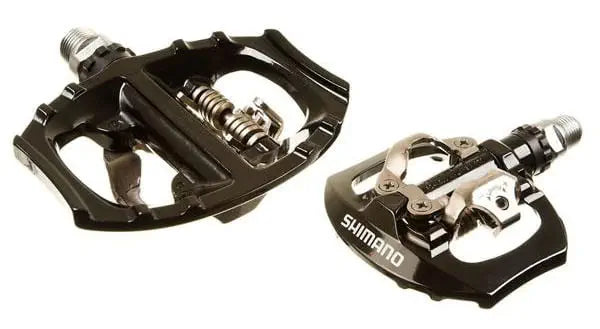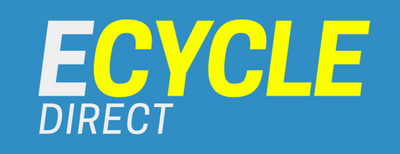
What pedals do you need?
Pedals supplied by bike manufacturers are often functional but cheap and low quality. It’s common for pedals to be one of the first upgrades riders make so let’s take a look at the different types available and help you decide what style you need.

9/16 vs 1/2
Before we dive into styles let’s have a brief recap on axle thread sizes. As a general rule, bicycles with one-piece cranks like small kids bikes or BMX’s tend to be 1/2 inch thread. For everything else, the de facto standard thread size is 9/16 inch. If unsure, just ask.
Quality
Pedals vary in cost and weight regardless of style. You can spend a small fortune on them if you desire but they will very quickly get scratched and beaten up so my advice is find a pedal with a decent steel or cro-mo axle on a (preferably serviceable) bearing. Function is much better than fashion here. They will feel much nicer and last longer. More expensive pedals often use materials like carbon and titanium to simply bring the weight down. Leave those for the race snakes. Average Joe’s like us don’t need that level of pedal.
Fitting them
Fitting a pedal to a crank is really simple unless you forget or don’t know the #1 rule: The left hand pedal has a left hand thread. To be clear, the left hand pedal is the one on the left of the bike with it facing forwards. A left hand thread means the pedal tightens by turning it counter-clockwise. The right hand thread tightens clockwise as normal. Left and Right pedals are often identified by an L & R stamped on the axle somewhere or the left hand one may have a splined axle. If in doubt ask, do not attempt to fit pedals unless you have identified which is which.
Fitting requires either a 15mm spanner or maybe a 5/6/8mm Allen key. Grease the threads. It’s not a bad idea to thread the pedal onto crank initially by hand to avoid cross-threading. Fitting can then be completed with your tool and tightened to the manufacturer recommended torque. If you don’t have a torque wrench, just nipped up tight is enough. Don’t over-tighten them.
Further Reading
Pedal Choices
Bicycle pedals come in various types, each designed for specific riding styles and preferences. Here are some of the most common types and their key differences:
Platform
- Design: Flat pedals with a large, wide surface area. Available in various colours
- Use: Common on casual and commuter bikes + MTB’s with elevated (replaceable) pins.
- Advantages: Easy to use with any type of shoe, provides a large and stable, double-sided platform for the foot. Pins provide grip.
- Disadvantages: Not as efficient as clipless systems, foot can move, can’t pull up on upstroke.

Toe Clips and Straps
- Design: Platform pedals with an added toe clip and strap to secure the foot.
- Use: Adds a level of foot retention for increased efficiency, often used in commuting and touring.
- Advantages: Better power transfer and control, without the need for special cycling shoes.
- Disadvantages: Single-sided, fiddly to get in and out as you have to lean down to adjust the strap by hand

Road Clipless (Look, Shimano SPD-SL, etc.)
- Design: Designed for road cycling shoes with large triangular cleats fitted to the shoe that clip into the pedal downwards like a ski and twist out sideward.
- Use: Preferred by road cyclists for efficiency and power transfer on smooth surfaces.
- Advantages: Foot firmly attached, larger contact area for improved efficiency.
- Disadvantages: Single-sided, specific shoes required, difficult to walk in shoes & cleats

Leisure/MTB Clipless (Shimano SPD, Crankbrothers, etc.):
- Design: Smaller foot print, double-sided pedal. Smaller shoe cleats are recessed into the sole. Clip in downwards and twist out.
- Use: Common among mountain bikers and leisure cyclists.
- Advantages: Double-sided, easier walking with recessed cleats, easier to clip in/out, better pedalling efficiency.
- Disadvantages: Requires specific shoes, often heavier than road clipless.

Hybrid
- Design: Combines a flat platform on one side and a clipless system on the other.
- Use: Offers versatility for riders who may want to use specific shoes and casual shoes.
- Advantages: Allows the rider to choose between a secure clipless connection and a flat platform for casual use.
- Disadvantages: Single-sided, often heaviest pedal type

